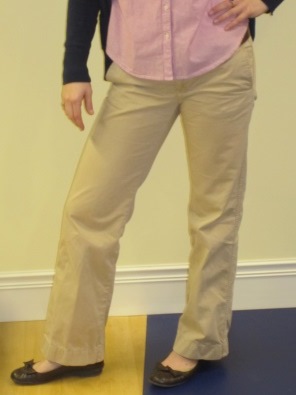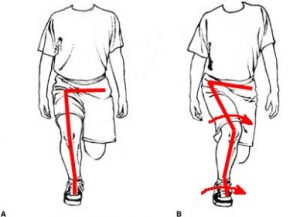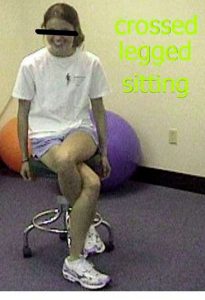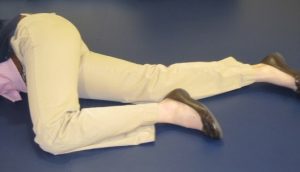Hip Pain: Gluteal Tendon Problems Postures & Positions to Avoid

Tendon problems are a common diagnosis at Achilles, knee (patellar tendon), shoulder (rotator cuff), and elbow (tennis elbow) pain. Interestingly though, pain on the side of the hip is commonly thought to be an inflammation of bursa. Recent investigation has shown that pain on the side of the hip commonly thought to be trochanteric bursitis, may actually be a tendon problem involving the gluteal muscles (gluteus medius, gluteus minimus). Only recently have clinical examination procedures been identified in order to diagnosis gluteal tendonopathies. Definitive diagnosis does require the visualization from an MRI.
Common symptoms include pain lying on side, walking, and climbing stairs. It can occur in active athletes or sedentary individuals, and most commonly it affects premenopausal and post-menopausal females. There is an interesting clinical trial underway at La Trobe University, Bundoora Australia that is investigating whether hormone supplementation is helpful or hurtful when it comes to treating tendon synthesis and repair.
Historically, standard treatment for tendon problems was to recommend stretching exercises. Thanks to the work of Jill Cook at La Trobe University and others we have come to recognize tendons problems and/or bursitis is likely caused by compressive forces on tissues. Stretching the muscle tendon unit often results in compression of the painful tendon and/or painful bursa against the underlying boney prominence. Therefore stretching exercises should be avoided. Do not do IT band stretches. Do not do piriformis stretching exercises. Do not do massage or form rolling of painful area.
Musculoskeletal pain occurs when there is not enough movement or when there is too much movement. Gluteal tendon problems are related to too much movement of hip in the direction of adduction – thigh crossing the mid-line. Treatment therefore needs to minimize or avoid habitual repetitive movement and postures of the thigh moving in direction of adduction thigh crossing the mid-line of the body.
The figure on the right in the illustration below shows excessive femoral adduction medial rotation of the right leg. This movement needs to be avoided and eliminated during daily activities.

The first step to heal gluteal tendon pain is to minimize and avoid habitual postures and positions which increase compressive load on the gluteal tendons. Avoid or minimize postures/positions of femoral adduction and medial rotation. Avoid or minimize the following sitting postures illustrated below


Avoid or minimize asymmetrical standing postures and positions with the majority of weight borne in the painful hip is in a position of femoral adduction. The illustrations below the left leg is crossing mid-line of body (femoral adduction), turned inward (medial rotation). This can be described as standing with “hip hanging posture”, or standing “with an attitude”.

Avoid or minimize sleeping postures were the painful hip/thigh is in a position of adduction, crossing the mid-line of the body as illustrated below (left leg). Use pillows between the knees to decrease compressive forces at the hip.

The second step is to begin strengthening exercises. Because gluteal tendon problems have likely been misdiagnosed or under diagnosed Dr. Google does not have a lot of information available describing appropriate strengthening exercise protocols available. A smart Physical Therapist can assist in identifying appropriate exercise to do at the appropriate stage of healing, and identifying appropriate activity restrictions and return to sport/exercise.
If you’re experiencing hip pain, it may be due to gluteal tendon problems. If that’s the case do not stretch the tendon and avoid compression of the tendon. Work with your physical therapist to facilitate healing and strengthening of tendon.
Damien Howell Physical Therapy – 804-647-9499 – Fax: 866-879-8591
At-Home, At Office, At Fitness Facility – I come to you, I do home visits
Damien@damienhowellpt.com
